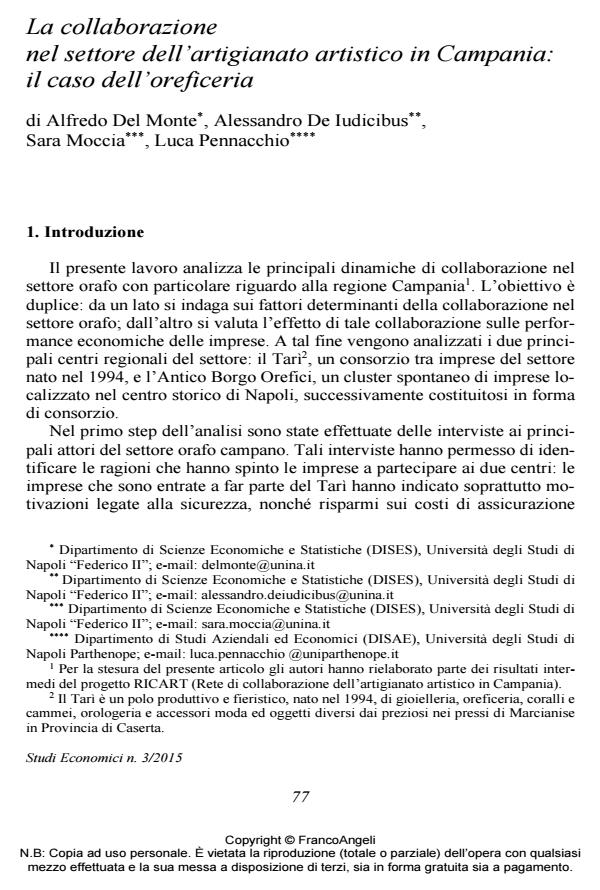Cooperation in the Jewelry Industry: Evidence from the Campania Region of Italy
Journal title STUDI ECONOMICI
Author/s Alfredo Del Monte, Alessandro De Iudicibus, Sara Moccia, Luca Pennacchio
Publishing Year 2016 Issue 2015/117
Language Italian Pages 26 P. 77-102 File size 323 KB
DOI 10.3280/STE2015-117005
DOI is like a bar code for intellectual property: to have more infomation
click here
Below, you can see the article first page
If you want to buy this article in PDF format, you can do it, following the instructions to buy download credits

FrancoAngeli is member of Publishers International Linking Association, Inc (PILA), a not-for-profit association which run the CrossRef service enabling links to and from online scholarly content.
This paper analyzes the main trends of cooperation among firms operating in the jewelry industry of the Campania region of Italy. The two main regional consortia are analyzed: Tarì and Antico Borgo Orefici, Interviews with the primary players have investigated the reasons for companies to join the two consortia. Firms join Tarì for security purposes and cost savings, while firms in the Antico Borgo Orefici judge the cost to join Tarì too high. Using data from a survey conducted on firms participating in an annual fair organized by Tarì in 2015, we have performed an econometric analysis. The results indicate a low propensity towards cooperation, mostly limited to vertical collaborations with suppliers and customers. Other types of cooperation, such as horizontal or institutional, are rarely used. However, firms that cooperate show better economic performance. The major advantage associated to partnerships is the exploitation of new production processes and new machinery.
Keywords: Collaboration, jewelry, bivariate probit model, open data, small firms
Jel codes: L2, L52, O3, C01, C3
Alfredo Del Monte, Alessandro De Iudicibus, Sara Moccia, Luca Pennacchio, La collaborazione nel settore dell’artigianato artistico in Campania: il caso dell’oreficeria in "STUDI ECONOMICI " 117/2015, pp 77-102, DOI: 10.3280/STE2015-117005